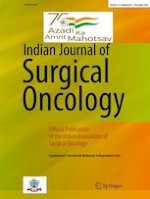Erschienen in:

24.01.2022 | Original Article
How Cancer Care Developed in India in 75 Years of Independence—Tamil Nadu Scenario
verfasst von:
E. Hemanth Raj
Erschienen in:
Indian Journal of Surgical Oncology
|
Sonderheft 1/2022
Einloggen, um Zugang zu erhalten
Abstract
Tamil Nadu has always been in the forefront in medical care. This is also true in the field of cancer care. The predecessor of present Bernard Institute of Radiology (BIR) the Government X-ray Institute Chennai, Premier Radiological Institute and Cancer Hospital, Chennai and CMC Vellore Radiation oncology unit were all started pre independence. In the first 25 years after independence, other centres like Cancer Institute (WIA) Adyar, Chennai; Valavadi Narayanaswamy Cancer Centre Coimbatore and Government Erskines (Rajaji) Hospital, Madurai started functioning. BIR started the first diploma and degree course in radiotherapy. Asia’s first cobalt therapy unit commenced function from the Cancer Institute in 1957. The country’s first nuclear medicine department, medical physics department, paediatric oncology department and medical oncology department were all started in the Cancer Institute. Its founder Dr. Muthulakshmi Reddy was a great social reformer. She and her son Dr. Krishnamurthi were keen followers of Gandhiji. In the next 25 years, two new state government centres came up. The first linear accelerator in the country started functioning in the Cancer Institute. MSc (Medical Physics), MCh surgical oncology and DM medical oncology courses were stated at the Institute. Presently, there are about 100 centres functioning in the state with more than 300 qualified surgical, medical and radiation oncologists. Apollo cancer hospitals have contributed for some facilities like PET scan and proton therapy units for the first time in the country. There are about 12 hospital-based cancer registries in the state. Tamil Nadu cancer registry covers the entire 77 million population of the state. Population census–based rural free cancer screening program is conducted in four districts by the Cancer Institute. Jeevodaya is the country’s second hospice facility started functioning in the suburb of Chennai from 1990 onwards. At present, there are several centres spread across the state involved in palliative care.